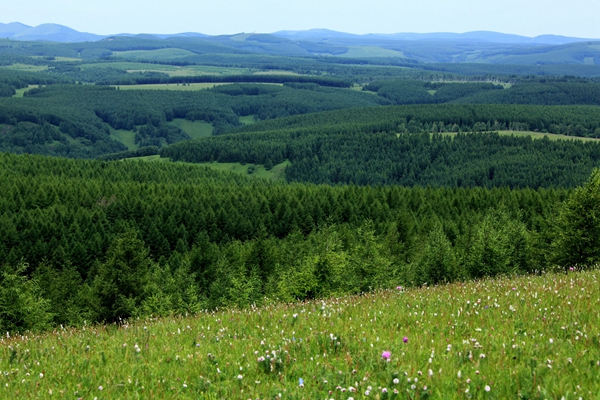NPC deputy: Green development needs long-term efforts
- By Guo Yiming
 0 Comment(s)
0 Comment(s) Print
Print E-mail China.org.cn, March 11, 2018
E-mail China.org.cn, March 11, 2018
"Afforestation and ecological protection will continue to be our long-term focus and require lasting efforts from generation to generation," said a deputy to the 13th National People's Congress from Saihanba, the world's largest man-made forest, on Saturday.

Zhang Limin, also head of Beimandian Forest Farm in Saihanba, told China.org.cn that they still have a long way to go and more things to do despite the achievements made over the past five decades.
Located just 150 kilometers from Beijing, Saihanba Forest Farm has been transformed from "wasteland" to "woodland." Within 56 years, the forest coverage in the area has increased from 12 percent in 1962 to 80 percent in 2016, and it now forms a natural barrier between the capital and sandstorms that blow in from the north. It also serves to help purify 137 million cubic meters of water every year.
Last December, the Saihanba afforestation community won the prestigious U.N. environmental award for pioneering innovative and cost-effective grassroots-led initiatives to reclaim degraded landscapes.
"Since the establishment of the forest farm back in 1962, generations of foresters have made constant explorations and improvements in their practice through trials and errors," Zhang said.
Saihanba Forest Farm has developed in a sustainable way, with economic growth based on tourism, tree seeding, wind power generation and logging. The green sectors brought in 100 million yuan (US$15.1 million) in 2016, outweighing the revenues from past logging operations, data from the National Development and Reform Commission showed.
"We hope the good practices explored here can be applicable and scaled up to other regions across China and even the world," he added.
During this year's government report, Premier Li Keqiang vowed to step up ecological and environmental protection, complete work on drawing up redlines for protecting ecosystems, and strengthen wetland conservation and restoration.
To increase afforestation and forest quality across the country, Zhang proposed to include forest quality into the green GDP calculations, increase subsidies for forest tending, advance scientific management of national forests, and encourage technological innovations.
He also hoped that support for state-owned forest farms can be included into the rural revitalization strategy put forward in this year's government work report so that those farms can enjoy more preferential policies in infrastructure building and financial aid.
In the future, Saihanba will further increase its afforested areas, improve forest quality based on the region's characteristics and prevent forest fires, Zhang added.






Go to Forum >>0 Comment(s)